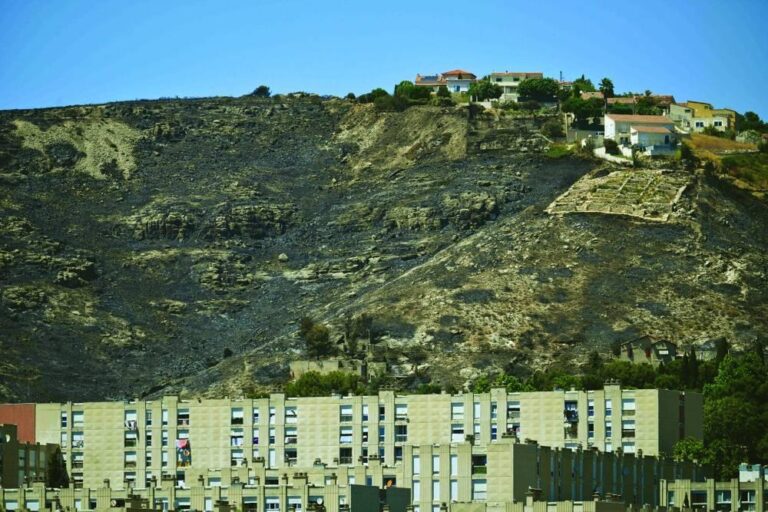Introduction
As wildfires continue to ravage parts of southern France, the Mistral wind has emerged as a significant player in the unfolding crisis. This powerful, dry wind, known for its ability to fan flames and exacerbate fire behavior, has been sweeping through the Marseille region, complicating firefighting efforts and intensifying the blaze’s reach. In this article, we explore the characteristics of the Mistral wind, its historical impact on the region, and how it is currently influencing the wildfire situation in Marseille. With fire crews battling the flames against the backdrop of this formidable natural force, understanding the Mistral’s role is crucial in assessing both the challenges and strategies in mitigating the ongoing disaster.
Understanding the Mistral Wind and Its Role in Wildfire Behavior
The Mistral, a powerful and persistent northwesterly wind, is characterized by its cold and dry nature. Originating in the Rh√¥ne Valley, it sweeps down towards the Mediterranean coast, playing a crucial role in the region’s climate. This wind can reach speeds of up to 90 km/h (56 mph), creating conditions that exacerbate wildfire situations. The Mistral’s ability to lower humidity and spread embers across vast distances is particularly concerning, as it transforms localized fires into devastating infernos capable of engulfing entire areas in a matter of hours.
The influence of the Mistral on wildfire behavior can be understood through several key factors:
- Increased Fire Spread: The high winds propel flames and embers, allowing fires to leap across firebreaks.
- Dry Conditions: The Mistral reduces moisture in vegetation, making it extremely flammable.
- Rapid Fire Intensity Changes: Winds can cause sudden flare-ups, trapping firefighters and complicating containment efforts.
In wildfire-prone regions like Marseille, the Mistral serves as both a natural phenomenon and a formidable adversary, significantly shaping the landscape and demanding urgent attention from firefighting authorities.
The Impact of Mistral Winds on Climate and Local Ecosystems
The Mistral wind, a powerful and dry gust originating from the Rhône Valley, significantly influences the climate and local ecosystems of southern France. This northwesterly wind can reach speeds of up to 90 km/h (56 mph), causing rapid evaporation and contributing to arid conditions. Its effect on temperatures is profound, often leading to warmer winters and cooler summers, which can dramatically alter local flora and fauna. Ecosystems dependent on consistent rainfall may suffer, as prolonged bouts of Mistral can desiccate habitats, impacting species diversity and abundance.
Moreover, the Mistral wind plays a crucial role in wildfire dynamics. By fanning flames and carrying embers over long distances, it increases the risk of uncontrolled fires, a phenomenon witnessed in the recent Marseille wildfire. The following table summarizes the key impacts of the Mistral winds:
| Impact | Description |
|---|---|
| Soil Moisture | Reduces moisture levels, stressing vegetation. |
| Wildfire Spread | Enhances fire intensity and potential for spread. |
| Temperature Variation | Leads to warmer temperatures in winter and cooler summers. |
| Ecosystem Disruption | Displaces local wildlife and affects biodiversity. |
Safety Measures for Residents Amid Mistral-Driven Wildfires
As wildfires fueled by the Mistral wind escalate in intensity, residents are urged to adopt critical safety measures to protect themselves and their properties. Emergency preparedness is paramount; individuals should ensure they have a plan in place that includes an escape route and a designated meeting place for family members. Additionally, staying informed through local news outlets and weather warnings can help communities respond rapidly to evolving situations. Residents are also recommended to create a defensible space around their homes by clearing flammable materials and maintaining a well-groomed landscape to minimize fire risks.
Community resources are available to assist in these efforts; local fire departments often conduct fire safety workshops that provide valuable insight into fire-resistant landscaping and emergency response. Furthermore, it’s crucial to have an emergency supply kit ready, stocked with essentials such as water, non-perishable food, first aid supplies, and important documents. In light of the ongoing wildfire threats, consider the following safety checklist:
| Safety Measure | Description |
|---|---|
| Stay Informed | Regularly check local news and alert systems. |
| Emergency Kit | Assemble a kit with essentials for at least 72 hours. |
| Evacuation Plan | Designate a clear escape route and meeting point. |
| Defensible Space | Remove flammable debris and create buffer zones. |
Mitigating Fire Risks: Strategies for Communities in Affected Areas
In light of the recent wildfires exacerbated by the fierce Mistral winds, communities must adopt proactive approaches to safeguard their environments and residents. Key strategies include enhancing community preparedness through regular drills and education campaigns focused on fire safety. Local authorities can encourage residents to create defensible spaces around their properties by clearing flammable vegetation and establishing firebreaks, which can significantly reduce the fire’s intensity. Furthermore, the implementation of a communication network to alert citizens of impending fire threats is crucial, particularly during high-risk periods.
Collaboration with local organizations can provide essential resources for fire risk mitigation. Community engagement initiatives, such as tree planting and promoting fire-resistant landscaping, can foster resilience in vulnerable areas. Local governments might also establish incentive programs for homeowners who adopt fire-smart practices. The following table summarizes effective community strategies:
| Strategy | Description |
|---|---|
| Education | Regular training and workshops on fire safety. |
| Defensible Spaces | Creating buffer zones around homes to reduce fire spread. |
| Alert Systems | Implementing emergency alert systems for quick information dissemination. |
| Fire-Resistant Landscaping | Encouraging the use of fire-resistant plants and materials. |
Future Outlook
As the flames continue to ravage areas around Marseille, understanding the role of the Mistral wind becomes crucial in assessing both the immediate threat and the broader implications for firefighting efforts. With its potential to exacerbate fire conditions, this powerful and dry wind poses a significant challenge for emergency responders. As authorities grapple with the unfolding situation, the interplay between natural elements and human impact underscores the importance of preparedness in the face of increasing wildfire risks. Continued monitoring of weather conditions and strategic planning will be essential in mitigating the effects of this devastating phenomenon. As residents brace for the ongoing threats, the need for a coordinated response highlights the resilience of the community in confronting nature’s fury.




